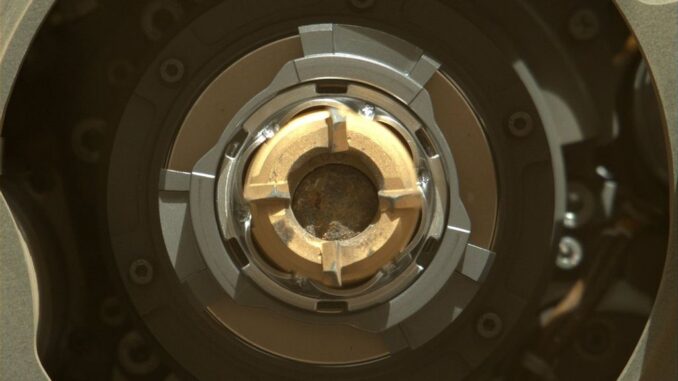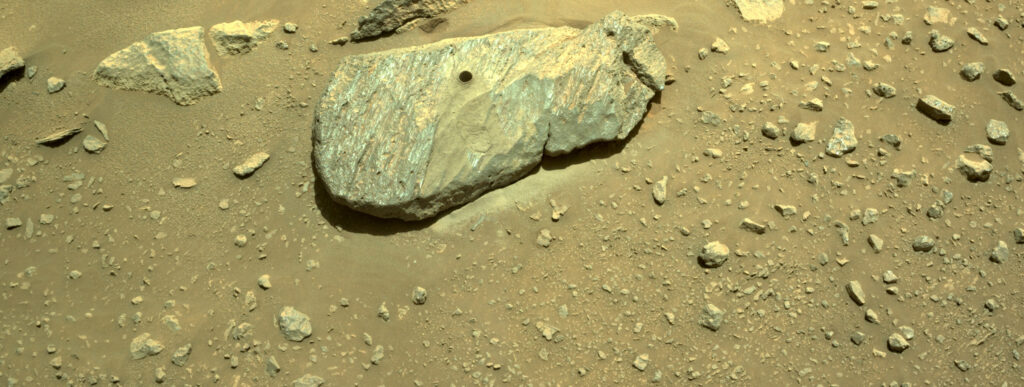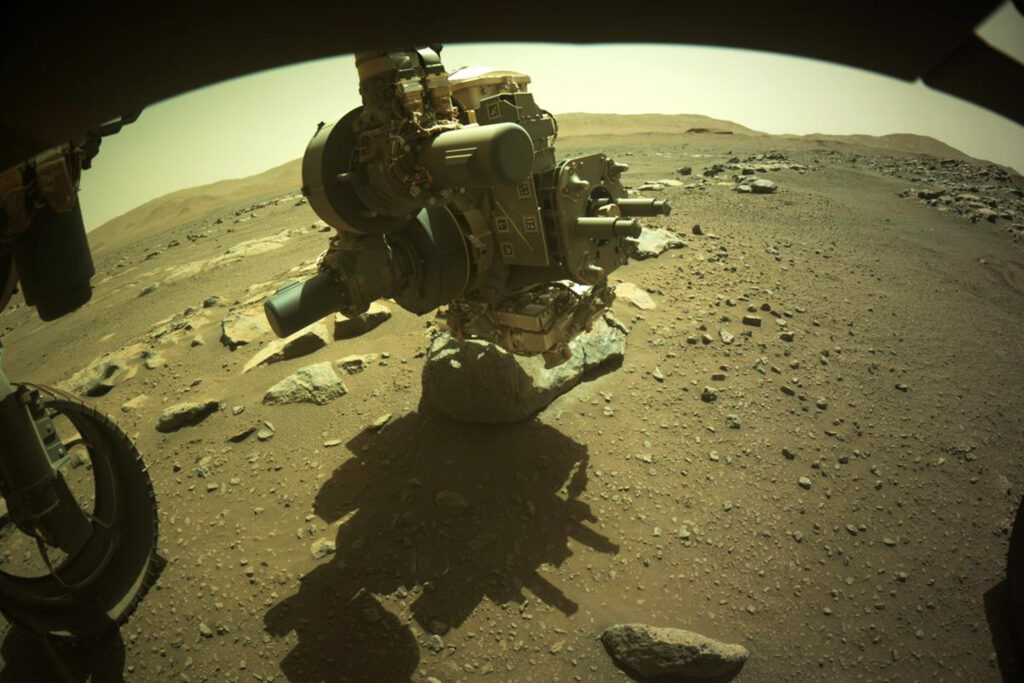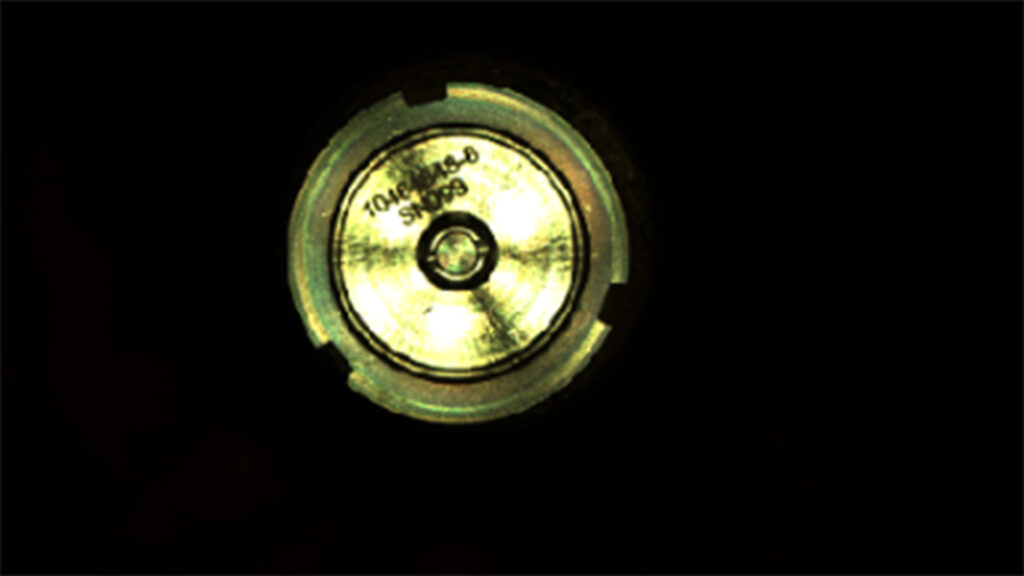
WASHINGTON — The Perseverance rover, developed by the National Aeronautics and Space Administration (NASA) on Sept. 6, completed the collection of the first sample of Martian rock, a core from Jezero Crater slightly thicker than a pencil.
In April 2020, the National Aeronautics and Space Administration informed that the scientists believe Jezero Crater was once flooded with water and was home to an ancient river delta.
“The process of the landing site selection involved a combination of mission team members and scientists from around the world, who carefully examined more than 60 candidate locations on the Red Planet,” said the statement by NASA.
“After the exhaustive five-year study of potential sites, each with its unique characteristics and appeal, Jezero rose to the top.”
Mission controllers at the National Aeronautics and Space Administration’s Jet Propulsion Laboratory in Southern California received data that confirmed the historic milestone.

The core is now enclosed in an airtight titanium sample tube, making it available for retrieval in the future.
Through the “Mars Sample Return campaign,” NASA and European Space Agency plan a series of future missions to return the rover’s sample tubes to Earth for closer study through the Mars Sample Return campaign. These samples would be the first set of scientifically identified and selected materials produced from another planet.
“National Aeronautics and Space Administration has a history of setting ambitious goals and then accomplishing them, reflecting our nation’s commitment to discovery and innovation,” said Bill Nelson, Administrator of the National Aeronautics and Space Administration.
“This is a momentous achievement, and I can’t wait to see the incredible discoveries produced by Perseverance and our team.”
Along with identifying and collecting samples of rock and regolith (broken gravel and dust) while searching for signs of ancient, microscopic life, Perseverance’s mission includes studying the Jezero region to understand the geology and ancient habitability of the area, as well as to characterize the past climate.
“For all of National Aeronautics and Space Administration science, this is truly a historic moment,” said Thomas Zurbuchen, associate administrator for science at National Aeronautics and Space Administration Headquarters in Washington.
“Just as the Apollo Moon missions demonstrated the enduring scientific value of returning samples from other worlds for analysis here on our planet, we will be doing the same with the samples Perseverance collects as part of our Mars Sample Return program.”
Scientists expect jaw-dropping discoveries across a broad set of science areas, using Earth’s most sophisticated science instruments. This includes an exploration into whether life once existed on Mars.

The sample-taking process began on Sept. 1, when the rotary percussive drill at the end of Perseverance’s robotic arm cored into a flat, briefcase-size Mars rock nicknamed “Rochette.”
After completing the coring process, the arm maneuvered the corer, bit, and sample tube so the rover’s mast-mounted camera system (Mastcam-Z) camera instrument could image the contents of the still-unsealed tube and transmit the results back to Earth. After mission controllers confirmed the cored rock’s presence in the tube, they sent a command to complete the processing of the sample.
Perseverance—the rover landed on Mars— transferred sample tube serial number 266. It is Martian cargo into the rover’s interior to measure and image the rock core. It then hermetically sealed the container, took another image, and stored the tube.
“With over 3,000 parts, the Sampling and Caching System is the most complex mechanism ever sent into space,” said Larry D. James, interim director of Jet Propulsion Laboratory. “Our Perseverance team is excited and proud to see the system perform so well on Mars and take the first step for returning samples to Earth.”
“We also recognize that a worldwide team of National Aeronautics and Space Administration, industry partners, academia, and international space agencies contributed to and shared in this historic success.”
Perseverance is currently exploring the rocky outcrops and boulders of “Artuby,” a ridgeline of more than a half-mile (900 meters) bordering two geologic units believed to contain Jezero Crater’s most profound and most ancient layers of exposed bedrock.
“Getting the first sample under our belt is a huge milestone,” said Ken Farley, Perseverance Project Scientist of Caltech. “When we get these samples back on Earth, they are going to tell us a great deal about some of the earliest chapters in the evolution of Mars.
“However geologically intriguing the contents of sample tube 266 will be, they won’t tell the complete story of this place. There is a lot of Jezero Crater left to explore, and we will continue our journey in the months and years ahead.”

The rover’s initial science foray, which spans hundreds of Sols (Martian days), will be complete when Perseverance returns to its landing site. At that point, Perseverance will have traveled between 1.6 and 3.1 miles (2.5 and 5 kilometers). It may also have filled as many as eight of its 43 sample tubes.
After that, Perseverance will travel north, then west, toward the location of its second science campaign, which is Jezero Crater’s delta region. The delta is the fan-shaped remains of the spot where an ancient river met a lake within the crater.
The area may be affluent from another planet in clay minerals. Such minerals can preserve fossilized signs of old, microscopic life on Earth and are often associated with biological processes.
In cooperation with European Space Agency, subsequent National Aeronautics and Space Administration missions would send spacecraft to Mars to collect these sealed samples from the surface and return them to Earth for in-depth analysis.
The Mars 2020 Perseverance mission is part of the National Aeronautics and Space Administration’s Moon to Mars exploration approach, including Artemis missions to the Moon that will help prepare for the first human exploration mission to the Red Planet.
In 1994, NASA announced the start of the Mars Exploration Program, initially called the Mars Surveyor Program.
“There are several strategic, practical, and scientific reasons for humans to explore Mars,” said NASA.
“Among them, we know that Mars is the most accessible place in the solar system. Additionally, exploring Mars provides the opportunity to possibly answer the origin and evolution of life questions, and could someday be a destination for the survival of humankind.”
(With inputs from ANI),
Edited by Saptak Datta and Ritaban Misra
The post Picking Up Pieces: NASA’s Perseverance Rover Collects First Mars Rock Samples appeared first on Zenger News.
